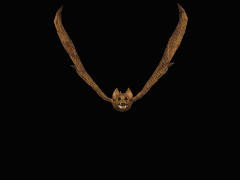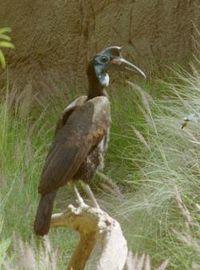


|
Bucerotidae:
Hornbills (family Bucerotidae) are a group of birds whose bill is shaped like a cow's horn, but without a twist, sometimes with a casque on the upper mandible. Frequently, the bill is brightly coloured. Both the common English and the scientific name of the family refer to the shape of the bill, "buceros" being "cow horn" in Greek. The Bucerotidae family includes 57 species, 9 of them endemic to the southern part of Africa. Their distribution ranges from Africa south of the Sahara through tropical Asia to the Philippines and Solomon Islands. Most are arboreal birds of dense forest, but the large ground hornbills (Bucorvus), as their name implies, are terrestrial birds of open savanna. The female lays up to six white eggs. During incubation, the female (of all species except the two ground hornbills) is locked within the nest cavity by a wall made of mud, droppings and fruit pulp. There is only one narrow aperture, big enough for the male to transfer food to the mother and the chicks. During the incubation period the female undergoes a complete moult. When the chicks and the female are too big to fit in the nest, the mother breaks out and rebuilds the wall, then both parents feed the chicks. In some species the chicks themselves rebuild the wall unaided. |
